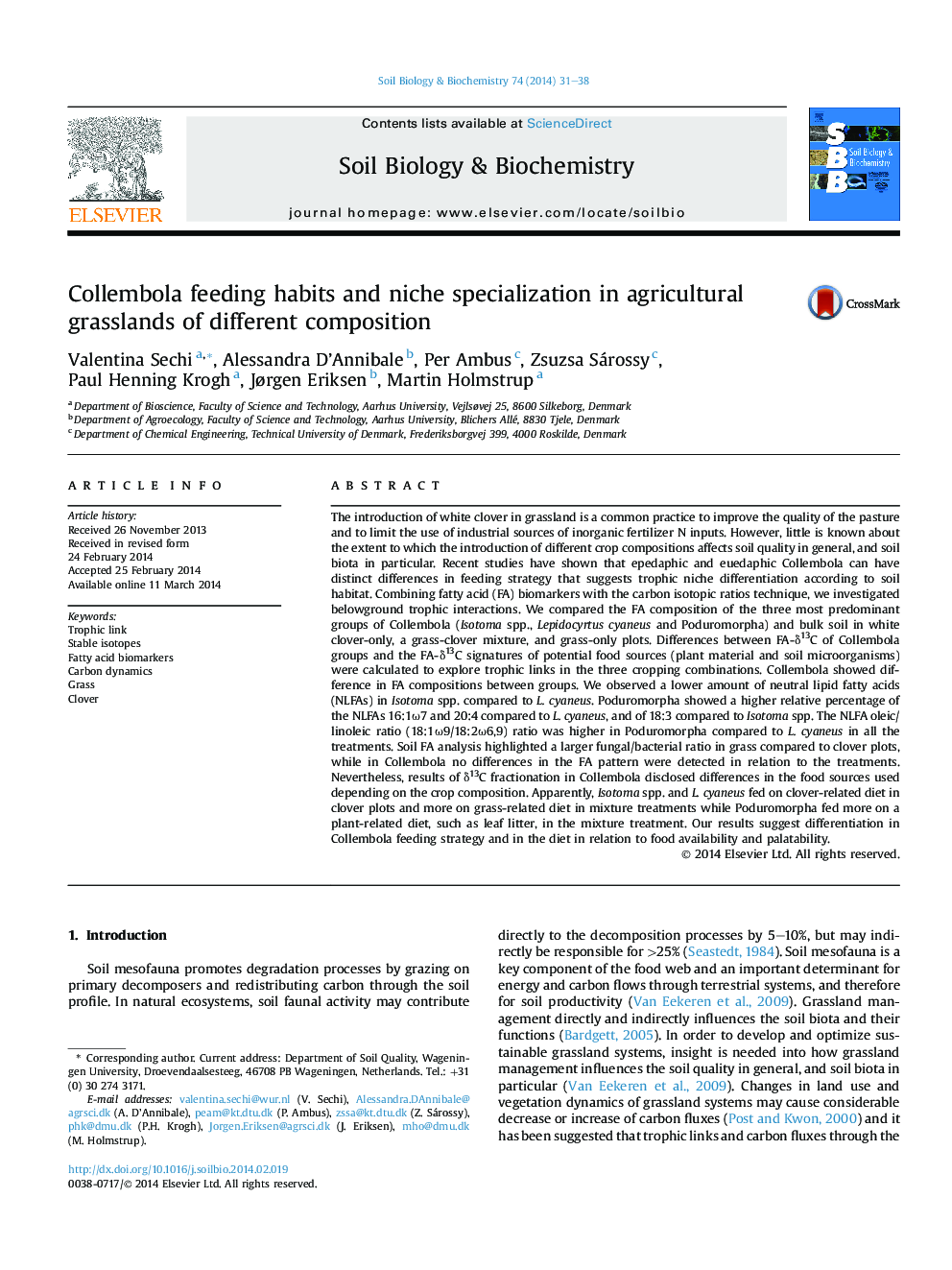| Article ID | Journal | Published Year | Pages | File Type |
|---|---|---|---|---|
| 2024609 | Soil Biology and Biochemistry | 2014 | 8 Pages |
•We analyzed FAs composition and FA-δ13C signatures of Collembola and food source.•We found a larger fungal/bacterial ratio in grass compared to clover plots.•No differences in Collembola FA patterns were detected in relation to treatments.•Differences between collembolan groups emerged in the FA composition.•δ13C fractionation in Collembola shows diet changes depending on crop composition.
The introduction of white clover in grassland is a common practice to improve the quality of the pasture and to limit the use of industrial sources of inorganic fertilizer N inputs. However, little is known about the extent to which the introduction of different crop compositions affects soil quality in general, and soil biota in particular. Recent studies have shown that epedaphic and euedaphic Collembola can have distinct differences in feeding strategy that suggests trophic niche differentiation according to soil habitat. Combining fatty acid (FA) biomarkers with the carbon isotopic ratios technique, we investigated belowground trophic interactions. We compared the FA composition of the three most predominant groups of Collembola (Isotoma spp., Lepidocyrtus cyaneus and Poduromorpha) and bulk soil in white clover-only, a grass-clover mixture, and grass-only plots. Differences between FA-δ13C of Collembola groups and the FA-δ13C signatures of potential food sources (plant material and soil microorganisms) were calculated to explore trophic links in the three cropping combinations. Collembola showed difference in FA compositions between groups. We observed a lower amount of neutral lipid fatty acids (NLFAs) in Isotoma spp. compared to L. cyaneus. Poduromorpha showed a higher relative percentage of the NLFAs 16:1ω7 and 20:4 compared to L. cyaneus, and of 18:3 compared to Isotoma spp. The NLFA oleic/linoleic ratio (18:1ω9/18:2ω6,9) ratio was higher in Poduromorpha compared to L. cyaneus in all the treatments. Soil FA analysis highlighted a larger fungal/bacterial ratio in grass compared to clover plots, while in Collembola no differences in the FA pattern were detected in relation to the treatments. Nevertheless, results of δ13C fractionation in Collembola disclosed differences in the food sources used depending on the crop composition. Apparently, Isotoma spp. and L. cyaneus fed on clover-related diet in clover plots and more on grass-related diet in mixture treatments while Poduromorpha fed more on a plant-related diet, such as leaf litter, in the mixture treatment. Our results suggest differentiation in Collembola feeding strategy and in the diet in relation to food availability and palatability.
